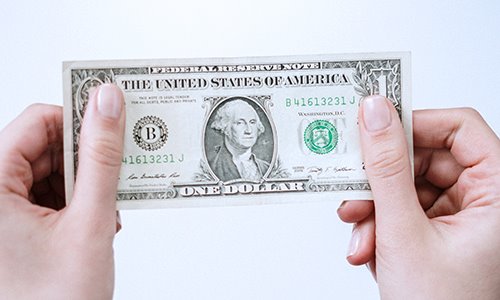
Photo by cottonbro: https://www.pexels.com/photo/one-dollar-bill-3943747/
The new analysis from Yardeni Research shows the growing burden of rising fuel prices on U.S. households. By comparison, just one year ago, the average American was paying about $2,800 on gasoline. The figure has also climbed rapidly from March, when Yardeni projected that gasoline cost most households about $3,800 annually.
The average price for a gallon of gas was at $4.56 nationwide on Wednesday, according to AAA, up from $3.04 one year ago. It marks the steepest price for gasoline on record; until the recent inflation spike, prices had not topped $4 a gallon nationally since 2008. Some Americans are paying even more for fuel: In California, for instance, prices are as high as $7 a gallon.
"No wonder that the consumer sentiment index is so depressed," Yardeni said in a note. "The wonder is that retail sales have been so surprisingly strong during April and May."
The sky-high gas prices have roots in the faster-than-expected economic recovery from the pandemic, which has triggered the hottest inflation in decades as a result of strong consumer demand, an influx of government stimulus and disruptions in the global supply chain.
The Labor Department reported earlier this month that consumer prices soared 8.3% in April, close to a 40-year high and far faster than economists expected. It underscored how strong inflationary pressures in the economy still are, despite hopes that consumer prices could peak soon.
Rising inflation is eating away at strong wage gains that American workers have seen in recent months.
Still, Yardeni noted that consumers have accumulated a lot of savings – in part because of the trillions in federal stimulus money – and are charging more on credit cards.
"When we are happy, we spend money," the note said. "When we are depressed, we spend even more money."
Recent government data seems to bolster Yardeni's argument: The Commerce Department reported earlier this week that retail sales, a measure of how much consumers spent on a number of everyday goods, including cars, food and gasoline, rose 0.9% in April from the prior month.
The so-called core retail sales, which exclude automobiles, gasoline, building materials and food services and are most closely correlated with the consumer spending aspect of the nation's gross domestic product, rose 1% in April.
Still, with gasoline prices soaring higher in recent weeks, analysts have warned that inflation could creep higher in May and that more expensive prices at the pumps could weigh on consumer spending.
"American consumers continued to spend more at retail stores in April, despite inflation as lower gasoline prices helped to boost spending on discretionary items," said Tuan Nguyen, a U.S. economist at RSM. "But it won’t last long as gasoline prices reached a record high in May."